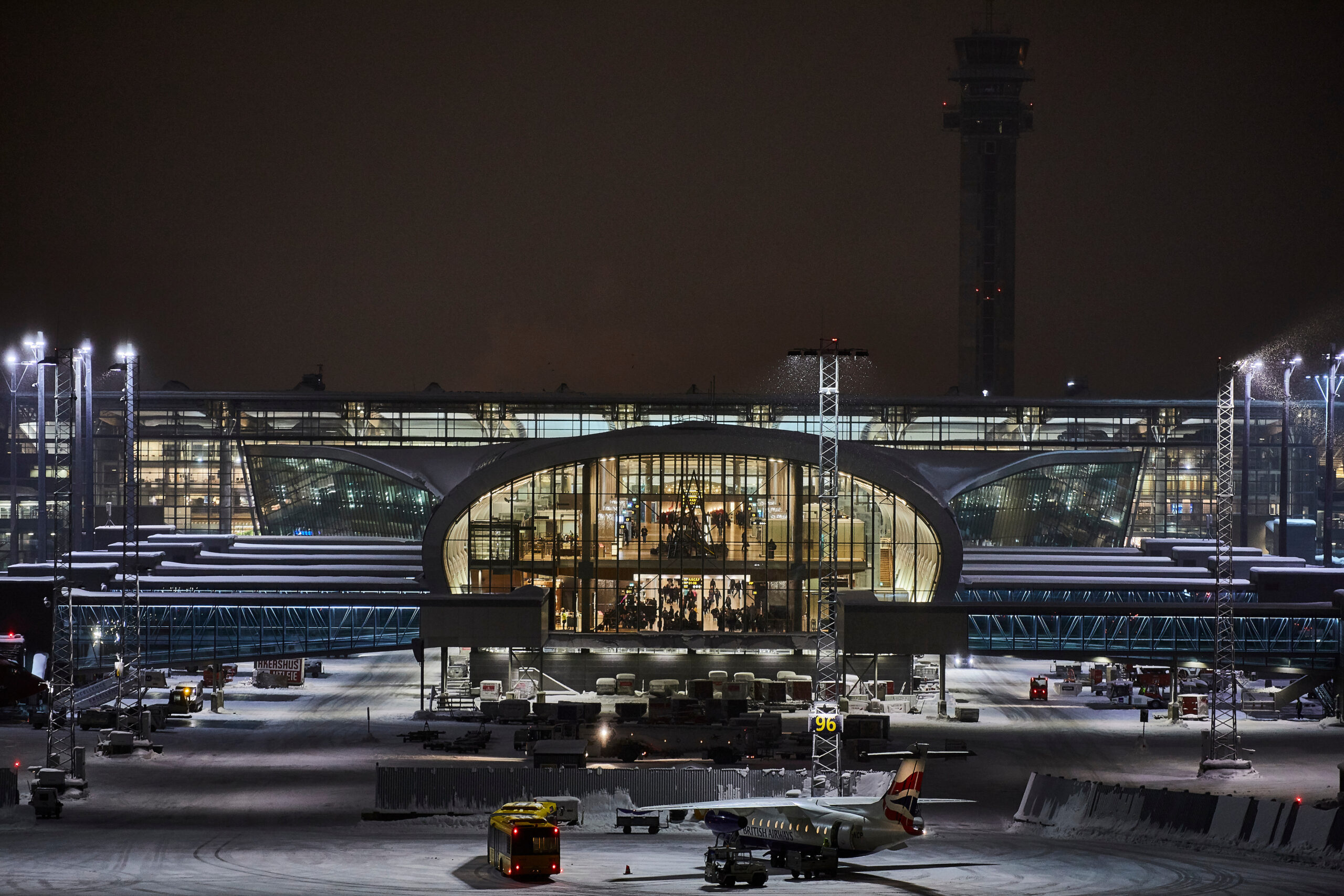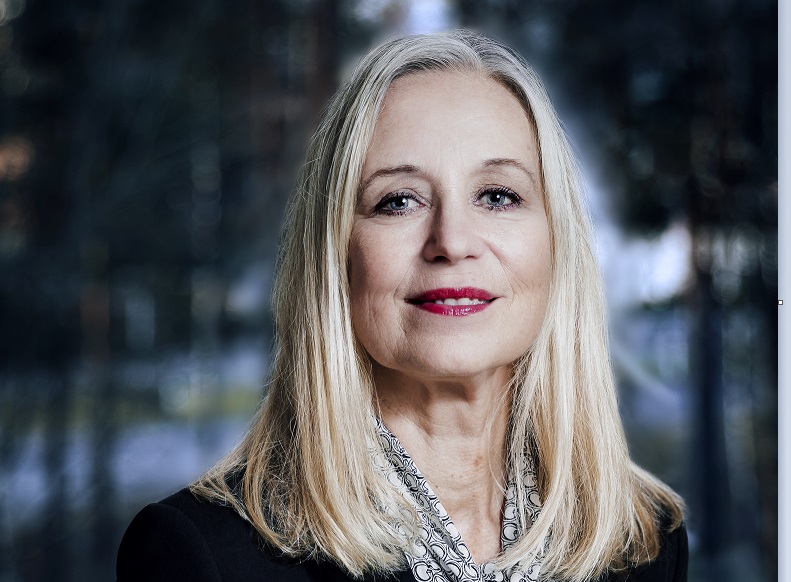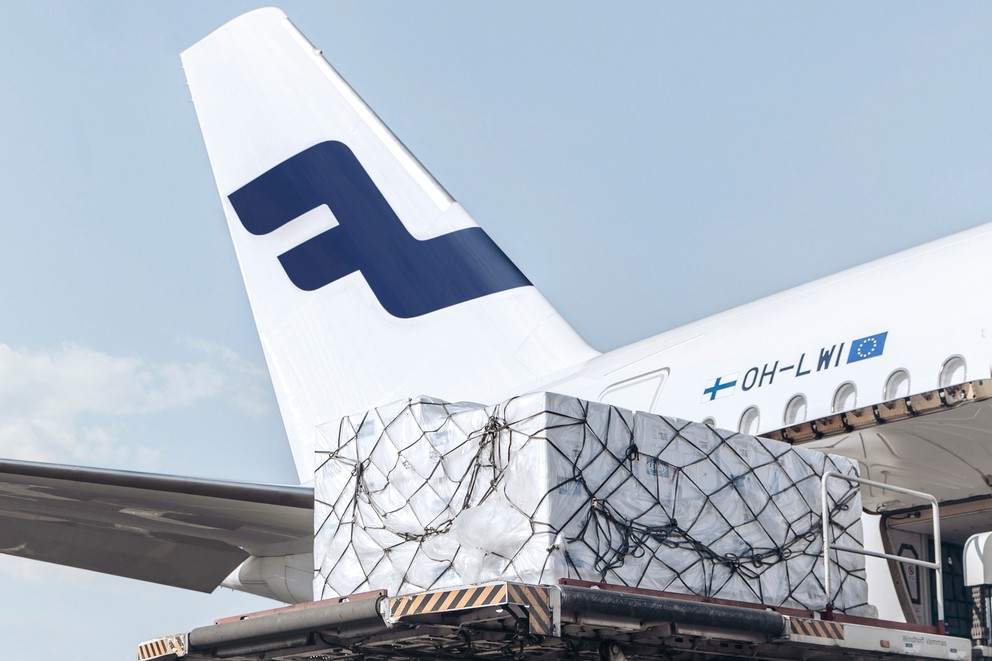Nordic countries invest to battle through challenges
05 / 07 / 2023

Oslo Airport at night. Photo: Avinor
Nordic air cargo players are facing the same market challenges as the industry is worldwide, but are seeking to tackle them with strategic infrastructure, service and fleet investments.
Elizabeth Axtelius is the director of aviation business at Swedavia, the Swedish state-owned company that owns and operates ten of the country’s airports. She sees the fast-growing Stockholm region as “one of Northern Europe’s most important logistic hubs”.
As Stockholm Arlanda Airport is “the most important Nordic hub”, Axtelius suggests, all major Scandinavian destinations can be reached within two hours by air and 24-hour distribution is possible throughout the entire Baltic Sea region. “This makes it the best location for [cargo moving] to Scandinavia and the Baltic region.”
Of late, she says there are challenges: “The market has been strong, although we have seen a lack of capacity for air cargo, and still do.”
Of course, Sweden has been affected by the general trends in airfreight during/after the pandemic and also the global slowdown in economic performance around the world, she points out.
For instance: “E-commerce, one of the recent years’ big drivers, has slowed down significantly. We’re now looking forward to an expected slightly stronger demand in the air cargo industry during the next two quarters following a slightly slower beginning for 2023.”
The US market has been particularly strong for cargo flowing through Stockholm, growing “a lot last year”, and that is down to increased air cargo capacity, Axtelius suggests. “We can also see a strong runner-up and that is Brazil (Sao Paulo Airport).”
Asia in general, China and India in particular, are not performing according to expectations. One reason has to do with a lack of bellyhold freight capacity serving those markets into Sweden.
The vast majority of cargo shipments passing through Swedavia’s gateways is transported as bellyhold cargo, and there is comparatively little on all-cargo flights.
However, in April, Swedavia announced that it is developing Cargo City at Stockholm Arlanda. Cargo City will be a new center for air cargo logistics, located in an area close to the airport’s terminals, with land for development there covering a total of 144,400 sq m. Swedavia is now looking for one or more partners for a long-term joint venture for the project.
And in other plans: “We’d like to expand our cargo facilities in the north at Luleå Airport. Here, we have capacity to transport goods to/from all over the north of the Nordic countries,” Axtelius informs.

Elizabeth Axtelius. Photo copyright: Orlando.G.Boström_Swedavia;
Finland’s cargo recovers
Finavia, the Finnish airport company that manages and operates 20 of the country’s gateways, is unlike some airport operators in that it does not operate any cargo facilities itself. Its role is limited to providing runway services and acting as a lessor for some facilities for cargo handling companies.
However, it still has good insight into the nation’s airfreight market. Petri Vuori, Finavia’s senior vice president, sales and route development, reports that cargo volumes through the cargo gateway of Helsinki Airport are now at about 70% of pre-Covid and pre-Russia/Ukraine war levels.
“This is mostly due to the fact that our cargo volumes are mainly belly cargo and because flights to/from Asia have not recovered, cargo capacity is missing,” Vuori says. Integrator volumes seem to be on the up, however.
Helsinki Airport is in the final stages of a 10-year development programme in which Finavia has expanded the passenger terminal area there. At the moment there are no investments planned relating to cargo, however, due to the existing airfreight challenges.
Finnair and integrators have their own cargo terminals and cargo handling companies at Helsinki, while Finavia’s other airports do not have much cargo business, apart from some ad hoc flights mainly to serve local factories.
Avinor plots Cargo Strategy
Christian Øgaarden is the commercial projects & operations director at Avinor, Norway’s state-owned limited company that operates 43 state-owned airports.
As well as his other responsibilities, he is currently acting as director of Avinor’s Cargo Strategy Project, which seeks to offer the best possible airfreight product to airline and freight forwarder customers at the nation’s biggest and busiest air cargo gateway, Oslo Gardermoen Airport.
Oslo is primarily a passenger rather than a cargo hub, Øgaarden points out, and the Cargo Strategy Project seeks to use freight as a way of making the operation of passenger services, that offer belly capacity, into and out of the airport more attractive.
In particular, it looks to offer the best possible product for those exporting Norway’s seafood, particularly salmon, the nation’s export staple.
Today, somewhere between 40 and 50% of the country’s fresh seafood headed for overseas markets is flown out of Oslo, which means the majority is actually trucked from Norway to other European airports and flown to markets overseas via European gateways such as Amsterdam Airport Schiphol and London Heathrow.
Connected to this and key to Øgaarden’s ambitions for Oslo Gardermoen is for the airport to achieve a good “directional balance” in its import and export cargo traffic. Norway is a big importer of consumer goods, and improving the attractiveness of flying more of the country’s seafood out of Oslo – as opposed to trucking it south out of Scandinavia into Northern Europe – will help level out the bellyhold loads for aircraft flying into and out of the airport.
Moreover, he wants to see Oslo evolve into acting as a Nordic regional hub for imports flying into the region (mainly from Asia) before being moved on to other markets such as Sweden, Finland and Copenhagen by utilising available existing capacity by both air and road.
Avinor is working on improving the cargo service Oslo offers in a number of areas to achieve this. These include focusing on speed and quality.
Øgaarden points out that flying perishables such as fresh salmon directly to distant markets from Oslo saves time in comparison to the current process of seafood initially being trucked to a European hub. Fresher fish also means higher quality.
Though Øgaarden admits that there in some cases may be a premium in terms of cost to flights over trucking services, he is also prioritising economy – it is a price-sensitive business, and he wants to offer value for money. Plus, there is an environmental benefit to avoiding the emissions caused by numerous road feeder services trucking seafood out of Norway.
Investments are today being made at Oslo to improve its seafood handling infrastructure. The World Seafood Center is currently being built as a private venture near Oslo Airport’s eastern runway. This, the world’s biggest seafood terminal covering 55,000 sq m in its first phase, Øgaarden says, is scheduled to open in June this year.
The World Seafood Center will be complemented by a seafood ‘hotel’ airside at Oslo, which will be used to keep any seafood shipments awaiting loading onto an aircraft fresh, also set to open later this year.

The World Seafood Center. Photo: Oslo Airport City
Carrier challenges
The region’s cargo carriers are turning to digitalisation, expansion and adding customer value to meet the economic challenges that face them.
Finnair Cargo is well positioned for 2023, says vice president Gabriela Hiitola. “We have maintained high operational capabilities throughout the Covid-19 pandemic and the war in Ukraine.”
During exceptional times Finnair has continued to fly to and from Asia, including operating cargo-only flights.
“The air cargo market is becoming more difficult to predict and we are still waiting to see where the market settles.
“Finnair’s new strategy aims to restore profitability by the summer of 2024 and execution of the strategy is well underway,” she continues.
“Today, we can see that demand in the cargo market is getting softer while at the same time, capacity is increasing.”
Finnair Cargo has had to react to changes in the airfreight industry and to fluctuating demand.
Over the past three years, Hitola reports, it has responded to two extreme external shocks: the pandemic and the closure of Russian airspace, but has emerged from these “culturally stronger: more resilient, resourceful and innovative”.
“For example, when Russian airspace closed in February 2022, Finnair reinstated Asian flights in less than two weeks using alternative routings, enabling supply chain solutions for our customers.”
The air cargo industry is undergoing a transformation phase characterised by the need for transparency, increased end-to-end visibility, sustainability and digitalisation, Hitola believes.
“This calls for integration across all air cargo partners, business collaboration and tight process and system integration,” she advises. “We are investing in better customer service through digitalisation, developing both our product and channels.
“We are focusing on developing our digital offering to new platforms and markets, while sustainability will also continue to be in the front and centre [of our thinking].”

Photo: Finnair Cargo
Reykjavik, Iceland-based freighter operator Bluebird Nordic Airlines is currently focused on developing its ACMI cargo services further.
The airline partners not only with integrators but with airlines worldwide that need capacity additional to their existing resources as well as with clients that are only making their initial steps in the air cargo business.
Plus, says Audrone Keinyte, Bluebird Nordic’s chief executive: “Our main target is having our freighters flying as much as possible; therefore, we are actively working on charter (ad hoc) flights, whether it is flights within Europe or to Asia, Africa or even to North America.
“For scheduled services, we currently have one aircraft based in Keflavik, Iceland to serve the route to Germany via Denmark.”
In fact, Bluebird currently operates 10 Boeing 737-400/800 freighters and plans to further add to its fleet both this and next year with newly converted 737-800 freighters.
“As we have an expanding fleet, we are constantly exploring new opportunities in different regions,” says Keinyte, adding: “While Europe remains one of the major markets for us we are eager to have a footprint in other continents too.”
She agrees that the current market in which Nordic airfreight players are operating is a difficult one.
“It is not a secret that the cargo market is challenging at the moment. It is requiring more effort and sharpness in the market to remain competitive.
“Currently, we feel that there is a lot of available capacity in the market, therefore the environment is much more competitive compared to the previous year.”
The forwarder’s perspective
Thomas Elmelund, director, airfreight at DSV, the Denmark-headquartered supply chain services giant, reports on freight volumes declining at “an overall level”, because of the world’s “general macroeconomic slowdown”.
That is also specifically the case for airfreight volumes in Scandinavia, where volumes have been falling since the end of 2022, he reports.
Elmelund reveals: “DSV is experiencing the same trend as the market when it comes to declining volumes, including in the Scandinavian airfreight market.
“What is interesting is that we are actually seeing an increase in shipment count, but the volumes are just lower than earlier.”
“Inflation, changes in consumer spending and rising interest rates and prices are all factors that contribute to the [challenging] situation. We have a Chinese market that has slowed down after the pandemic, impacting our export volumes, but especially our import volumes, as we have historically seen large volumes of import from China to Scandinavia.”
More positively, though: “While we are still not at the level where we once were, we are, however, seeing volumes picking up again after Covid restrictions were lifted and the Chinese New Year ended.”
Despite an airfreight market characterised by lower demand and increased capacity, “DSV is of course always focused on growing and expanding our business – this also goes for the Scandinavian airfreight market. We have no current concrete plans for significant changes but continue to focus on creating value for our customers and achieving customer service excellence,” Elmelund concludes.













